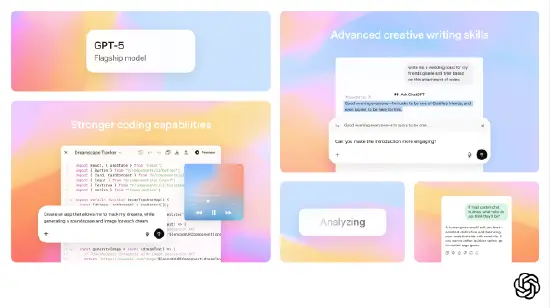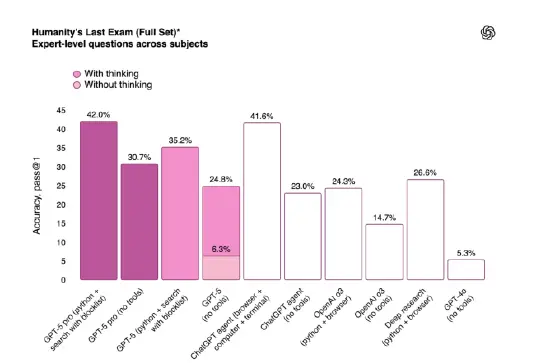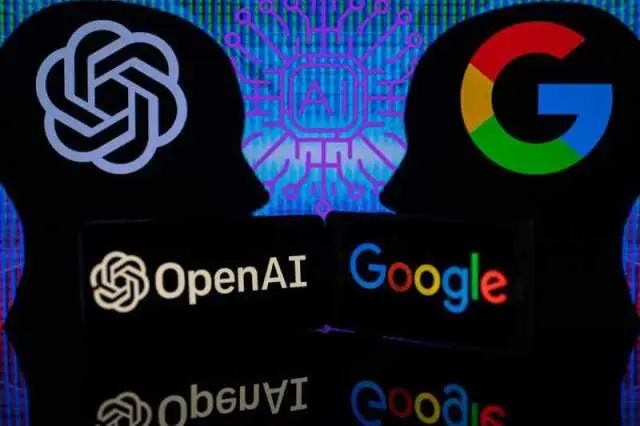OpenAI has launched GPT-5, its new flagship AI model, which will power the company's next-generation ChatGPT.
Released on Thursday (August 7), GPT-5 is OpenAI's first "unified" AI model, combining the reasoning power of its O-series models with the fast response times of its GPT-series counterparts. This next-generation model marks a new era for ChatGPT and its developer, OpenAI, and underscores OpenAI's broader ambition to develop AI systems that are closer to intelligent agents than chatbots.
If GPT-4 enabled AI chatbots to intelligently respond to a wide range of questions, GPT-5 will enable ChatGPT to perform a variety of tasks on its users' behalf, such as generating software applications, managing their schedules, or creating research briefs.
With GPT-5, OpenAI is also working to make ChatGPT even easier to use. GPT-5 features a real-time routing mechanism that allows it to autonomously determine the best way to provide an answer, without requiring the user to manually select settings—whether it's responding quickly to a user's question or taking more time to "think" about the answer.

At a press briefing, OpenAI CEO Sam Altman called GPT-5 "the world's best model" and said it represents a "significant step" toward developing artificial intelligence (also known as artificial general intelligence, or AGI) that can "outperform humans in most high-economic-value tasks."
"At any point in history, technology like GPT-5 would have been almost unimaginable," Altman said.
Starting Thursday, GPT-5 will be available as the default model for all free ChatGPT users. Nick Turley, OpenAI's vice president of ChatGPT, said this marks the first time the company has made AI reasoning models available to free users (previously, these more advanced models were only available to paid users).
"This is just one of the ways I'm excited about fulfilling my mission, to ensure these technologies truly benefit the masses," Turley said of the decision, referencing OpenAI's long-standing mission to make advanced AI accessible to as many people as possible.
Anticipation for GPT-5 is high; it's one of OpenAI's most anticipated product releases since ChatGPT catapulted the company to fame in 2012. According to the company, ChatGPT has since grown into one of the world's most popular consumer products, with over 700 million weekly users—nearly 10% of the global population.
Many see GPT-5 as a bellwether for the broader development of AI, and Silicon Valley's reaction to the model could have profound implications for Big Tech, Wall Street, and policymakers regulating tech. These stakeholders are closely watching to see whether GPT-5 can deliver the same significant leap in AI capabilities as its predecessor, GPT-4, and defy expectations of what software can do.
GPT-5 Slightly Outperforms Competitors
OpenAI claims GPT-5 achieves state-of-the-art performance in several areas, slightly outperforming leading AI models from companies like Anthropic, Google DeepMind, and Elon Musk's xAI on key benchmarks. However, in some other areas, GPT-5 lags slightly behind leading AI models.
The company claims GPT-5 demonstrates state-of-the-art performance in programming; Altman says the model is particularly adept at generating complete software applications on demand, a skill often referred to as "ambient programming."
On SWE-bench Verified (a test based on real-world programming tasks from GitHub), GPT-5 achieved a score of 74.9% on its first attempt. This puts GPT-5 slightly ahead of Anthropic's latest Claude Opus 4.1 model (74.5%) and Google DeepMind's Gemini 2.5 Pro model (59.6%). On the "Ultimate Humanity Exam" (a challenging test that measures AI models' performance in mathematics, humanities, and natural sciences), the version of GPT-5 with extended reasoning capabilities (GPT-5 Pro) scored 42% using the tool. This was slightly lower than xAI's Grok 4 Heavy model, which scored 44.4% on the test.

On GPQA Diamond (a test of PhD-level scientific questions), GPT-5 Pro scored 89.4% on its first attempt, surpassing Claude Opus 4.1 (80.9%) and Grok 4 Heavy (88.9%).
OpenAI stated that GPT-5 performed even better at answering health-related questions. In the "HealthBench Hard Hallucinations" test, which measures the accuracy of AI models' responses in health domains, OpenAI reported that GPT-5 (with its thinking feature enabled) had a hallucination rate of only 1.6%. This is significantly lower than the company's previous GPT-4o and o3 models, which scored 12.9% and 15.8%, respectively.
Although AI chatbots are not medical professionals, millions of users rely on them for health advice. To address this phenomenon, the company says GPT-5 will more proactively highlight potential health issues and help users interpret medical test results.
OpenAI also claims that GPT-5 outperforms other AI models in more subjective areas, such as creative design and writing, which are more difficult to measure. Turley says that in creative tasks, GPT-5's responses are more natural and demonstrate "better taste."
"The 'vibe' of this model is really great," Turley said.
GPT-5 is also more accurate than OpenAI's previous models, and the company claims that GPT-5 exhibits significantly less hallucinations (the tendency of AI models to fabricate information) than its o-series models. Hallucinations appear to be increasing in OpenAI's latest AI reasoning models, such as o3, for reasons the company previously stated it had not fully understood.
In response to ChatGPT prompts, OpenAI found that GPT-5 (when the "Think" feature was enabled) hallucinated and gave incorrect information 4.8% of the time. This is significantly lower than o3 and GPT-4o, which exhibited hallucinations at rates of 22% and 20.6%, respectively, in tests.
GPT-5's performance on Tau-bench, a benchmark that measures the ability of AI models to complete simulated online tasks, was mixed. In a test of AI's ability to navigate airline websites, GPT-5 scored 63.5%, slightly lower than the o3 model's 64.8%. In another test of AI's ability to navigate retail websites, GPT-5 scored 81.1%, lower than the Claude Opus 4.1 model's 82.4%.
OpenAI also stated that GPT-5 is more secure than its predecessors. While AI reasoning models occasionally exhibit a tendency to scheme against humans or lie to achieve their own goals, OpenAI found that GPT-5 has a lower rate of deception than other models.
Alex Bittur, OpenAI's head of security research, said that reducing deception not only improves GPT-5's security but also improves the user experience, creating a model that is "more transparent and honest in a way that users can trust."
Bittur also noted that GPT-5 is better at distinguishing between malicious users attempting to abuse ChatGPT and users making harmless requests. This allows GPT-5 to reject more unsafe questions while reducing the number of rejections from users seeking harmless information.
Upgrades for Consumers and Developers
With the release of GPT-5, ChatGPT has received several user experience upgrades. Users can now choose from four new personality types in ChatGPT's settings: Cynic, Robot, Listener, and Nerdy. The company says these personalities will automatically adjust ChatGPT's responses, without the user having to specifically ask the model to respond in a specific way.
ChatGPT Plus subscribers, paying $20 per month, have a higher GPT-5 usage limit than free users. Pro subscribers, paying $200 per month, have unlimited GPT-5 use and access to the enhanced version, GPT-5 Pro, which uses additional computing resources to produce even better answers. Institutions with OpenAI Team, Edu, and Enterprise plans will receive GPT-5 as the default model next week.
For developers, GPT-5 will be available through OpenAI's API in three sizes—gpt-5, gpt-5-mini, and gpt-5-nano—that differ in how long they spend on "inference" tasks. Developers can also now control the verbosity of responses through the OpenAI API, deciding how long the AI model's responses should be. The base GPT-5 model charges developers $1.25 per million input tokens (approximately 750,000 words, more than the entire "Lord of the Rings" series) and $10 per million output tokens.
The release of GPT-5 follows a busy week for OpenAI. The company released an open-source weighted inference model, gpt-oss, which developers and businesses can download for free and run at minimal cost. While this open-source model is nearly as powerful as OpenAI's previous top models, o3 and o4-mini, GPT-5 sets new cutting-edge performance standards in some areas, such as programming.
However, in several areas, GPT-5 appears to be roughly comparable to other leading-edge AI models. Of course, benchmarks only capture part of an AI model's performance; it remains to be seen how developers will use GPT-5 in the real world and whether it truly outperforms its competitors.




